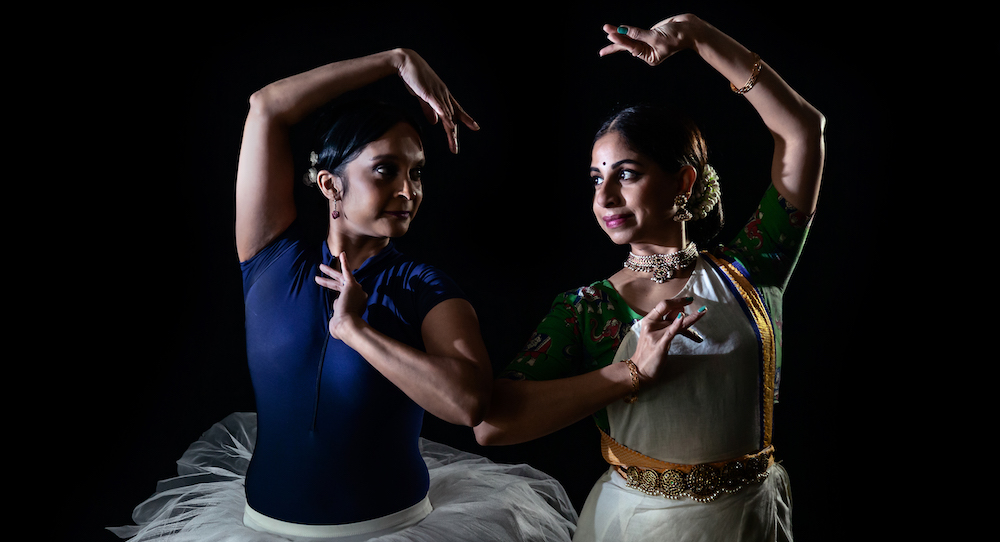Dancehouse, Melbourne.
5 October 2023.
“Why can’t the art speak for itself?” she asks, in a tone more accusative than enquiring. The short answer here is that it does; and, if left alone to do so, Touch would be an elegant and beautiful evocation of a simple and powerful idea.
Alas, it is not quite so. Sadly, Touch is an ironically self-cannibalising work that dilutes its own impact, and what is lost is the very thing it sets out to find. That said, even in its heavy-handed misfiring, it lands. In seeking harmony but unearthing fracture and discomfort, it succeeds as provocation. Maybe this is what its makers intended all along.
Principally a two hander, it brings together the classical canons of India and Europe, Bharathanatyam and ballet. As movement lexicons, both are steeped in tradition and technical rigour, and when we see them in dialogue, the details of similarity and difference are revealed. One more percussive and articulated, the other more flexed and gymnastic. Yet, both with an emphasis on gestural precision, both grounded in a physical architecture that tends toward a distilled sensuality. From the almost calligraphic wrist swirls of Deepa Mani’s South Asian form to the taut, feline tension of Sheena Chundee’s full body prowl, the choreographic exchange is pure delight.
Touch is best when it does not explain itself. As dance, it works. We get it. Begin with mirroring. Diverge, converge. Find a meet point. Retain integrity. The underlying universality is plain to see. And it is graceful and welcoming. Indeed, so clear that even the smear of second-show tiredness and a few obvious stumbles could not obscure it.
However, the gem is tarnished. Overlaid as it is with cut/copy, undergraduate identity drama, Touch bites off its own nose. The low point arrives with a complaint about Bharathanatyam not being sufficiently recognised or understood. “It’s just not fair,” Mani tells us. This may well be so, but surely this is the lot of 99 percent of all practicing artists. We all know acclaim and funding goes to a tiny minority and that the rest of us must make do with crumbs.
(Is it ‘fair’ that my books don’t sell, or that my dear friend’s band haven’t cracked the Top 40? And what about all those dance artists out there who will never get reviewed by this publication, and whose work does not feature in a major arts festival like the Melbourne Fringe?)
Unfortunately, the ‘not fair’ claim chimes as banal at best, if not immature, entitled and counterproductive. Or worse, as cynical opportunism. A way to pander to the tick-box grant approval process.
To be ‘fair,’ though, we can empathise with Mani and Chundee’s frustrations. The arts, like human society more broadly, are not immune to the crude essentialisations of ethnicity, class and gender. (To some degree, I have encountered them myself, and I know many others in roughly the same boat.) It is therefore not unreasonable that those who feel unjustly excluded should seek ways to find their voice and express their anger. After all, as artists we are frequently in the vanguard of the ongoing challenge to orthodoxy.
Our challenge is to render that examination – usurpation – as art, and not as dull, didactic catechism. Then again, the team behind Touch may well have been mining a seam of deliberate dissonance. In the fission of choreographic beauty and clumsy polemic, there is perhaps something more impactful than a pleasant night of dance theatre. After all, Touch had me vexed for hours afterward; and I remain eerily uncomfortable about this critique.
Confession: I contemplated staying silent, or erring on the side of non-committal vagueness, but Chundee and Mani surely deserve better. It may not be fair, but it is real.
By Paul Ransom of Dance Informa.













